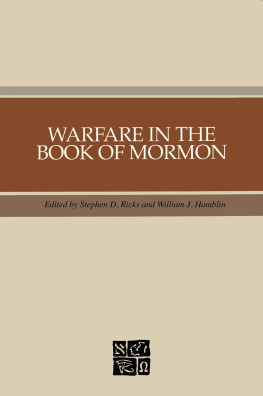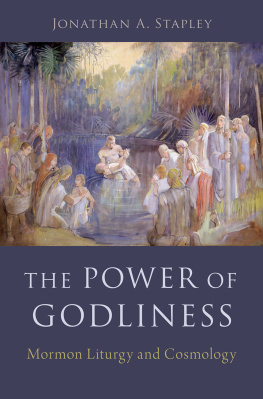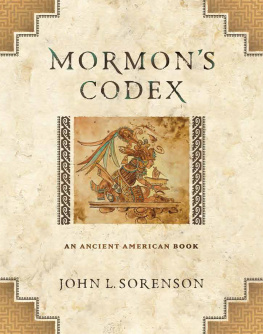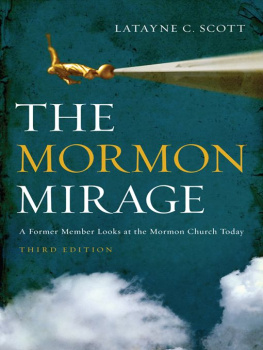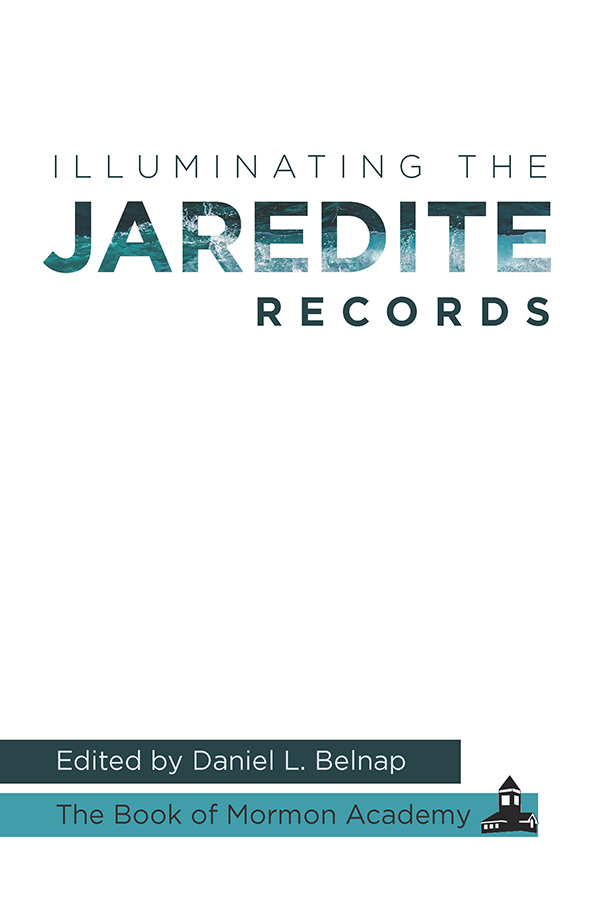Contents
Daniel L. Belnap
CULTURAL-HISTORICAL LENSES: IDENTITY AND PRAXIS IN THE JAREDITE RECORD
Daniel L. Belnap
Kerry Hull
Charles Swift
NARRATOLOGICAL LENSES: MORONI AND THE JAREDITE RECORD
Amy Easton-Flake
Frank F. Judd Jr.
Jared Ludlow
RECEPTION-HISTORICAL LENSES: WOMEN AND THE JAREDITE RECORDIN ANTIQUITY AND MODERNITY
Joseph M. Spencer
Nicholas J. Frederick
PEDAGOGICAL LENSES: TEACHING THE JAREDITE RECORD
Ryan Sharp
Tyler J. Griffin
introduction
A Knowledge of Those Destroyed
In 2018 Abinadi: He Came Among Them in Disguise was published as what was hoped would be the first in a series of volumes by the Book of Mormon Academy (BOMA). Established in 2013 at Brigham Young University, this consortium of Religious Education faculty was created to foster critical thinking about the Book of Mormon and to make their academic, theological, and pedagogical research available to the wider public through publications and presentations. This second volume in the series, Illuminating the Jaredite Records , continues that tradition by exploring the Jaredite record and its impact on the later Nephite and Lamanite cultures.
Although much of the Book of Mormon is concerned with the history of Lehi and Sariahs descendants, the Nephites and the Lamanites, following their departure from Jerusalem and subsequent settlement in the New World, it also recounts the history of an earlier people who inhabited the New World, known collectively as the Jaredites. Intriguingly, while there is no reference to any Nephite or Lamanite interacting directly with a Jaredite, the impact of the Jaredite culture on those cultures that followed it was far-reaching and profound. In particular, the discovery and subsequent translation of a Jaredite record within the first few generations of Nephite-Mulekite integration were clearly of intense interest to the Nephites. The description of the people whose material remains must have been encountered as the Nephites continued their northward migration, alongside the apparently former interaction between the surviving Jaredites and the Mulekite culture, seems to have piqued the Nephite imagination.
Even as interest in the Jaredites grew, Nephite spiritual leaders were concerned about the content of the Jaredite records and the potential negative impact it could have on Nephite society. Alma 37 contains Almas charge to his son Helaman to keep the record so the secret works of the Jaredites might be made known (presumably to teach the Nephites the negative consequences of wrongdoing), but also his charge to censor certain portions (see vv. 2122, 2732). Mormons commentaries in Helaman and 3 Nephi suggest that Almas fears were well-grounded. We read, for example, of the similarities between the Gadianton robbers who plagued Nephite/Lamanite society and the Jaredites, who also spread the works of darkness (Helaman 6:28).
Perhaps one reason that the Jaredite record was abridged by the last Nephite writer-editor, Moroni, was this concern over its contents. Although Moroni did not explain why he abridged it, his abridgment makes clear that he saw a connection between the promises made to the Nephites and the Jaredite experience (see Ether 4:415). Certainly, as he indicated in the title page of the Book of Mormon, the Jaredite experience, alongside the Nephite experience, will show unto the remnant of the house of Israel what great things the Lord hath done for their fathers and make known unto them the covenants of the Lord, and also be a means of convincing... the Jew and the Gentile that Jesus is the Christ, the Eternal God, manifesting himself unto all nations.
This volume explores the relationship between the Nephites and the Jaredite records culturally, politically, literarily, and theologically. As with the first volume in the series, the studies herein are grouped by methodological approach. The first section comprises studies undertaken from a cultural-historical perspective. It begins with Daniel Belnaps study addressing the impact of a Jaredite subculture on Nephite politics, in particular exploring the possible role of the Jaredite record(s) in the formation and continuation of the Gadianton robbers. As the title of Kerry Hulls paper suggests, he explores the role of sacred stones in Jaredite theologies of seership and divination, focusing particularly on Mesopotamian usage of luminous stones. Though his is not strictly a historical approach, Charles Swift engages with anthropological concepts of liminality to examine the life and development of the brother of Jared as recorded in the book of Ether.
The next section utilizes narratological lenses to explore different aspects of Moronis construction of the book of Ether. Amy Easton-Flake analyzes how Moroni manipulates narrative time in his redaction of Ethers record and notes how this reading can give insight into Moronis interpretation of the text. Recognizing a paucity of study resources for the book of Ether, Frank Judd isolates and contextualizes the six editorial commentaries that Moroni scatters throughout his version of Ether and probes how they reflect the prophets search for meaning in the Jaredite narrative. The section concludes with Jared Ludlows thematic study on the nature of power, spiritual and otherwise, which Moroni himself explores throughout the book of Ether.
The third section examines one of the most ambiguous female figures in the Book of Mormon, known only as the daughter of Jared. Performing a close reading of the text, Joseph Spencer provides evidence that textual discrepancies in the daughter of Jared narrative may indicate two separate textual traditions regarding this already-complex character, an approach that allows for an exploration of the role of women in the Jaredite record. Nicholas Fredericks study examines the reception of the daughter of Jared narrative by reviewing depictions of her over the past century and a half, comparing her depictions with those of Salome, another scriptural femme fatale .
The last section views the book of Ether through pedagogical lenses. Noting that teaching of the book of Ether is often lopsided, Ryan Sharp suggests that Ether 12 may be applied to students by recognizing how Moroni used the scriptural text to find answers to his own challenges. The final paper, by Tyler Griffin, is devotional, almost tutorial, in its structure, providing readers a template by which they can recognize the Jaredite narrative as a metaphor and apply that metaphor in their own lives.
As should be clear from the preceding description, Illuminating the Jaredite Records is not an exhaustive study of Jaredite civilization. Rather, it is a focused treatment of the Jaredite texts and their impact on later societies. This was by design, reflecting the interest among the contributors not so much in reconstructing the Jaredite culture and community but in examining the influence the Jaredites had on the later writers (and readers) of the Book of Mormon. Although the two societies never met in person, it is possible that the Jaredite civilization had an impact on Nephite society equal to, if not greater than, that of the biblical context from which it came. Examining Nephite history, redaction, and understanding through the Jaredite lens, then, can bring about new understanding and meaning concerning the Book of Mormon itself and the teachings found within it, which just so happens to be the very purpose of the Book of Mormon Academy. In that vein, we hope you, the reader, enjoy the volume.
notes
.Shon D. Hopkin, ed., Abinadi: He Came Among Them in Disguise (Provo, UT: Religious Studies Center, Brigham Young University; Salt Lake City, UT: Deseret Book, 2018).




